5 Real Ways We’ve Mastered Invisibility

When they go through puberty, every child fantasizes about getting the power of invisibility, so they can sneak into the library and read as much as they want. But invisibility isn’t a magic spell or something achieved using tech in the Pentagon’s most secret room. It’s a property enjoyed by many seemingly mundane things all around us. For example...
Erasable Pens Turn Ink Invisible
The way a pencil eraser works, you go over a page with a bit of rubber, and it dislodges the embedded graphite, wiping the sheet clean. Statistically, you have likely not used a pencil eraser in decades. You can now look back and chuckle about the idea that people made so many mistakes when writing that they had to design pencils accordingly.

Pens later got erasers, counterparts to pencil erasers. These erasers scraped the page, carving off a layer of paper along with the ink, and they were garbage. You could later get removable ink, where the ink was mixed with rubber cement and never absorbed deep into the paper. Later still, we got a new kind of pen with an eraser that works on another level. You rub the writing, just like with a pencil, and the ink vanishes from sight. It’s amazing, since it doesn’t look like you sent slivers of ink flying anywhere.
The pen uses thermochromic ink. Rubbing it with an eraser doesn’t dislodge any ink but it does create heat, through the power of friction. This heat activates a temperature adjusting agent in the ink, which separates two components of it: the leuco dye and the color developer. Together, these components look like ink. Separated, both are transparent. The ink is still on the page, but it’s now invisible.
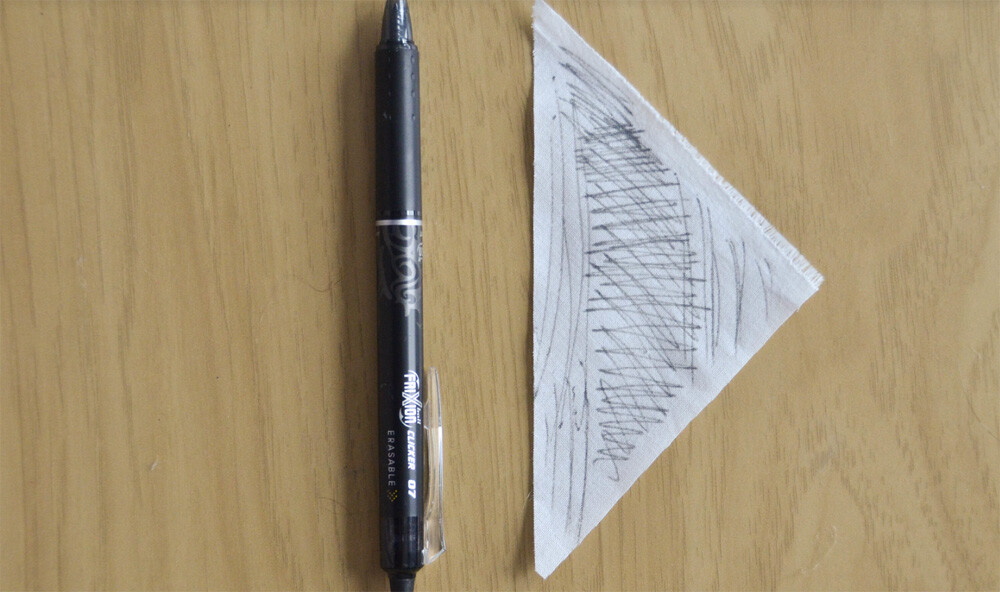
It’s funny because we also famously have a variety of invisible inks that turn visible under heat. Unlike when you heat lemon juice and turn it visible, though, heating erasable ink is a reversible reaction. Stick the erased ink in the freezer, and the vanished words return to view. So, if any of you were planning on writing all your passwords on your office’s wall calendar and then erasing them to be secure, we’d recommend against this.
Bleach Renders Stains Invisible, But the Filth Remains
Something else in your house leaves filth behind but just renders it transparent: classic bleach. When we casually refer to something getting “bleached” (your hair, bones that fade under the sun), we usually mean that it turns light or white. That’s not really what bleach does. When you bleach a stained white shirt, the shirt comes back white, but the stain hasn’t turned white, nor has it been removed. The bleach turns the stain invisible.
The stain on the clothes has a specific color thanks to molecules called chromophores. They absorb some wavelengths of light and reflect others. When bleach hits a stain, it oxidizes the chemicals, breaking up the bonds in the chromophores. The stain is still there, and feel free to be grossed out accordingly. But thanks to what the hypochlorite did to those bonds, light passes right through the stain.
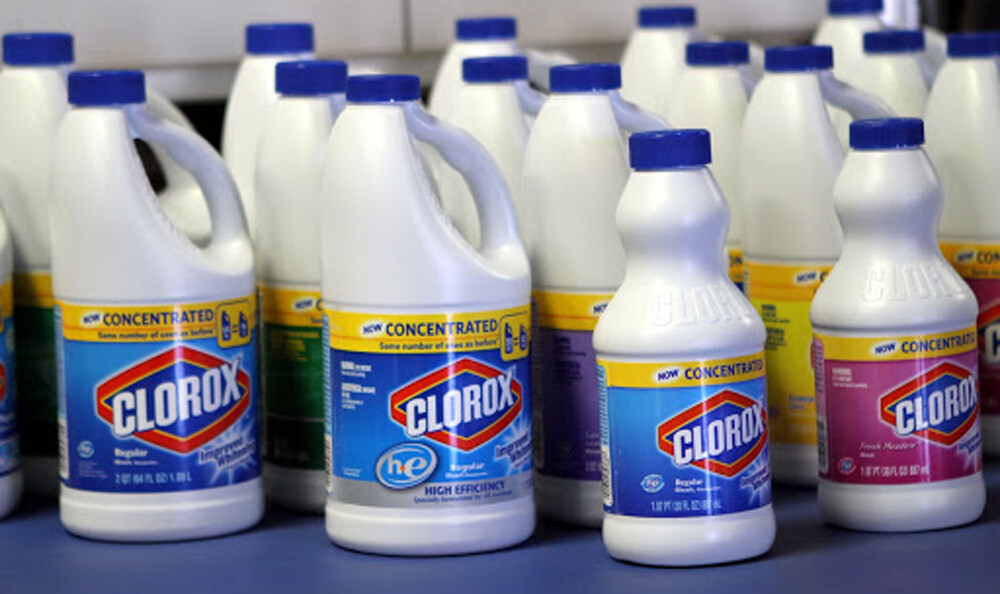
Of course, most of our readers are curious about the science of laundry for only one reason: You need to know how to remove blood, to hide the evidence. Don’t use bleach for that. Oxidizing blood just turns it redder. Actually, don’t use classic bleach on anything, if you can help it. Just buy whichever detergent looks the most modern and expensive.
NASA Made a Material for Heat-Seeking Missiles. It Wound Up in Our Mouths
NASA scientists were puttering around in their lab one day, with the simple goal of protecting the antennas of heat-seeking missiles. They needed a substance stronger than steel, and it needed to be transparent. It needed to absorb light — which sounds to us more like something that’s black rather than something transparent, but we’re just quoting NASA here. They came up with a compound called transparent polycrystalline alumina (TPA).
You might use this substance every day, if you, like so many of us, regularly launch heat-seeking missiles. Oh, and you also might use it if you wear transparent braces, because they use this same NASA-made substance. It’s fairly easy to make plastic invisible, but if you want something strong enough to serve as the brackets in braces, well, that’s going to be harder. TPA does the job, even if the braces still have a few other visible components:
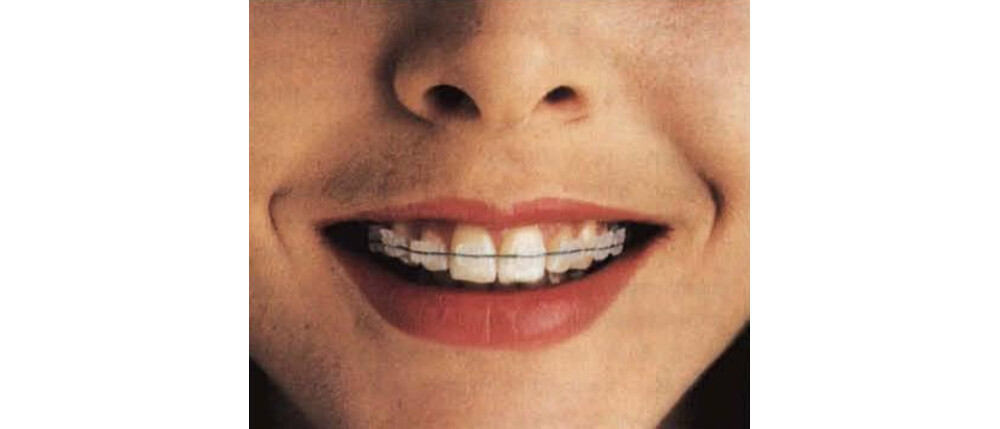
TPA is also used in the creation of lasers. So, if you wear braces, it only stands to reason that you can incinerate your opponents by opening your mouth.
You Can Totally Make Yourself Invisible... to Mosquitos
Insect repellents repel insects, right? If they don’t, we’re pretty sure you can sue someone. However, that’s not necessarily an accurate description of what they do.
When you call it a repellent, that makes it sound like an insect smells the ointment and becomes so disgusted that it makes a beeline away. That generally doesn’t happen. Many insects adore the scene of a rotting corpses, and mosquitos love the smell of human feet. So you may have trouble convincing them something is noxious.
Instead, scented repellents work by masking your own scent. Mosquitos don’t particularly mind the smell of Victoria’s Secret Bombshell, so they don’t go out of their way to avoid it, but when you put it on, you mask your own scent, as well as other chemical cues you give off. The mosquito doesn’t even detect you, so it never approaches. If it does approach, it might not recognize you as human and may not bite.
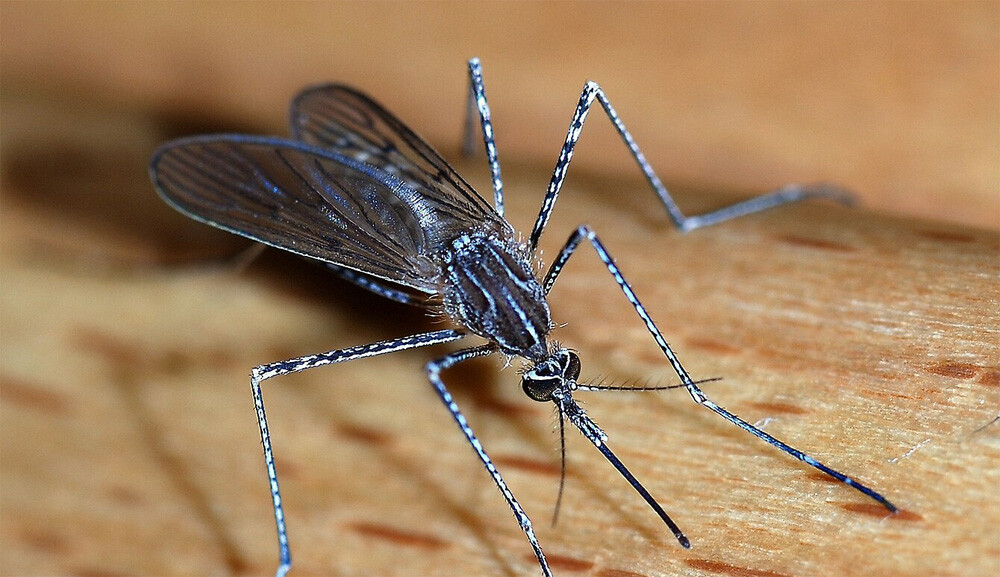
For this reason, lighting mosquito-repelling scented candles, adding a diffuse odor throughout the whole room, is unlikely to have any effect on mosquitos. Plugging in some device that fills the air with low-level poison, however, is quite effective and highly recommended. And it’s safe for humans, don’t worry — poisons are all a matter of dosage, and this low dosage will do nothing to you.
There’s a Bacteria That Transmits Light Right Through a Living Squid
The bobtail squid harbors a kind of bacteria that gives it the power of bioluminescence. When most deep-sea creatures use this power, they become more visible. The bobtail squid does the opposite.
The squid roams the ocean, with sunlight or moonlight faintly illuminating the water. Each creature that swims casts a shadow below it. Not the bobtail squid. The squid detects the amount of light falling on it and then — through means scientists have yet to hammer down — transmits this information to billions of bacteria located on its underside. These Vibrio fischeri bacteria, which don’t emit any light when in the ocean on their own, now glow, varying the intensity according to the amount of light that hits the top of the animal.
As a result, light shining from the bottom of the squid exactly matches light hitting the top of it, and it casts no shadow. Prey do not notice its approach and have no warning before the squid attacks.
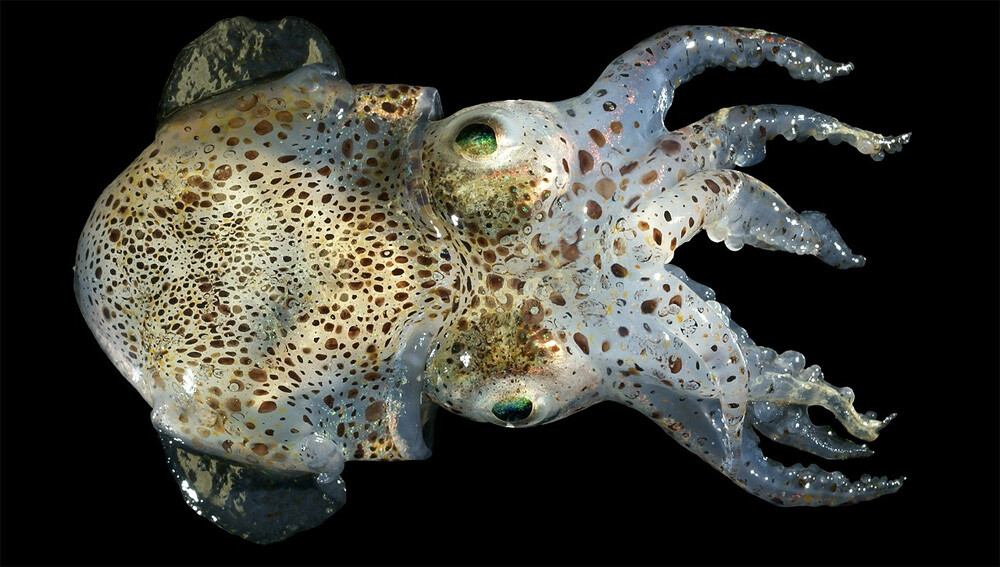
Could other organisms be using a more advanced form of this technique, passing complex light through themselves and rendering themselves totally invisible? If so, several of them are likely in the room with you right now. Reach for the nearest weapon, and fire randomly. Even if you do not hit your targets, you must let them know you’re on to them.
Follow Ryan Menezes on Twitter for more stuff no one should see.